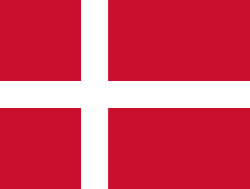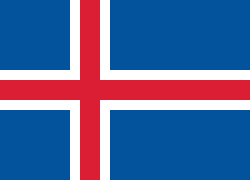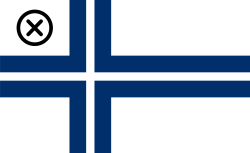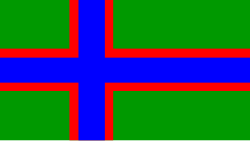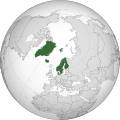

Larger flags, from left to right: Iceland, Faroe Islands, Denmark, Norway, Sweden, Finland;
Smaller flags, from left to right: Barra, South Uist, Yorkshire West Riding (historical), Orkney, Shetland, Scania, Åland, Pärnu, Setomaa (ethnic), Vepsians (ethnic).
A Nordic cross flag is a flag bearing the design of the Nordic or Scandinavian cross, a cross symbol in a rectangular field, with the centre of the cross shifted towards the hoist.
Contents
- Flag formats
- Flags of the Nordic countries
- Denmark
- Finland
- Iceland
- Norway
- Sweden
- Kalmar Union (historical)
- Regional Nordic flags
- Nordic cross flags outside the Nordic countries
- Armenia
- Brazil
- Croatia
- Estonia
- France
- Georgia
- Germany
- Hungary
- Latvia
- Lithuania
- Netherlands
- Russia
- Spain
- Thailand
- Teutonic Order
- Ukraine
- United Kingdom
- United States
- Other
- Ethnic flags
- Political flags
- Sport societies
- Fictional
- See also
- References
- Bibliography
- External links
All independent Nordic countries have adopted such flags in the modern period, and while the Nordic cross is named for its use in the national flags of the Nordic nations, the term is used universally by vexillologists, in reference not only to the flags of the Nordic countries but to other flags with similar designs. [1] The cross design represents Christianity, [2] [3] [4] and was first seen in the Dannebrog , the national flag of Denmark in the first half of the 13th century. The same design, but with a red Nordic cross on a yellow background, was used as union flag during the Kalmar union (1397 to 1523), and when that union fell apart in 1523 the same design, but with a yellow cross on a blue background (derived from the Swedish coat of arms adopted in 1442), was adopted as national flag of Sweden, while Norway adopted their flag in 1821. After gaining independence the other Nordic countries adopted national flags of the same design, Iceland in 1915 and Finland in 1918. The Norwegian flag was the first Nordic cross flag with three colours. All Nordic flags may be flown as gonfalons as well.




